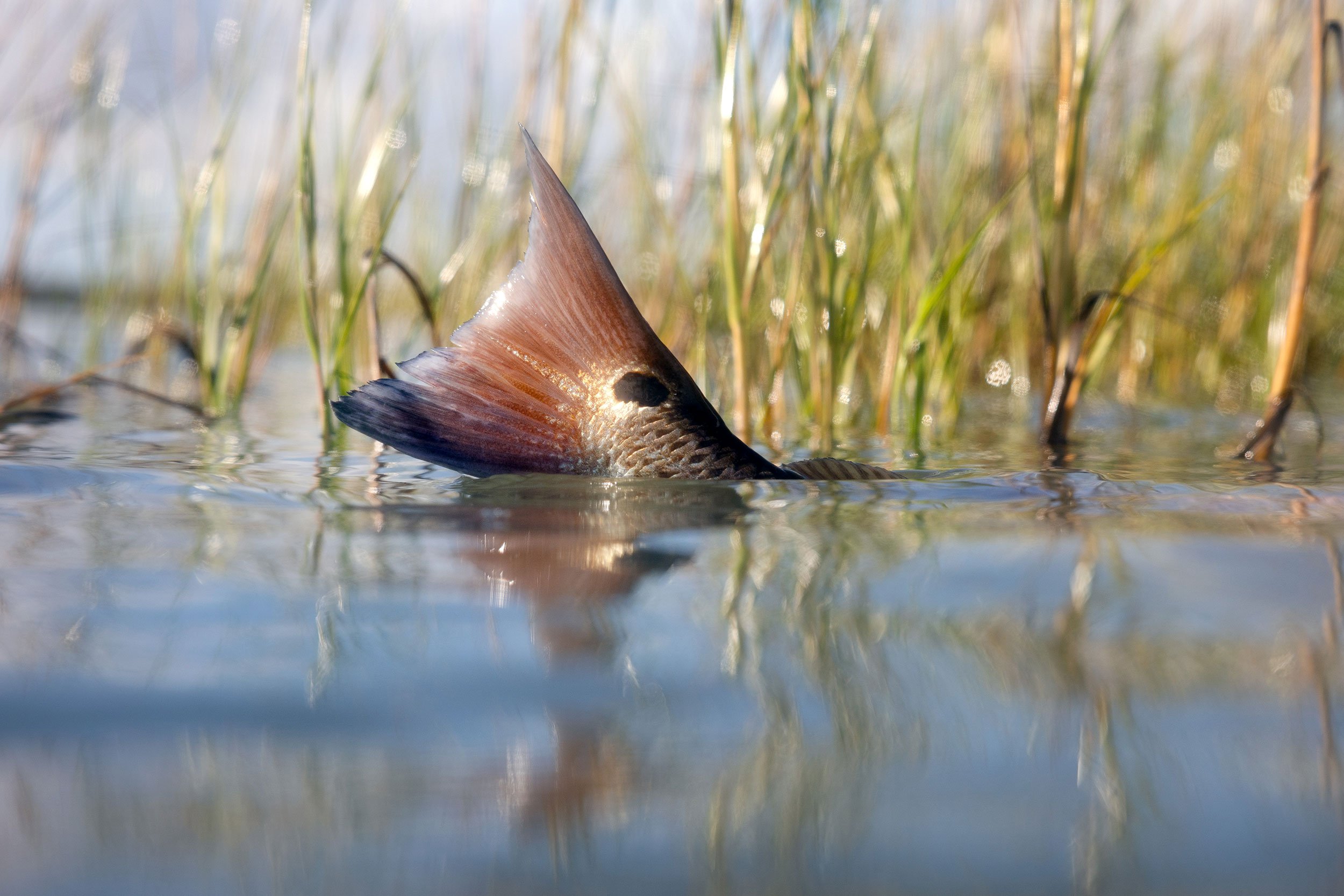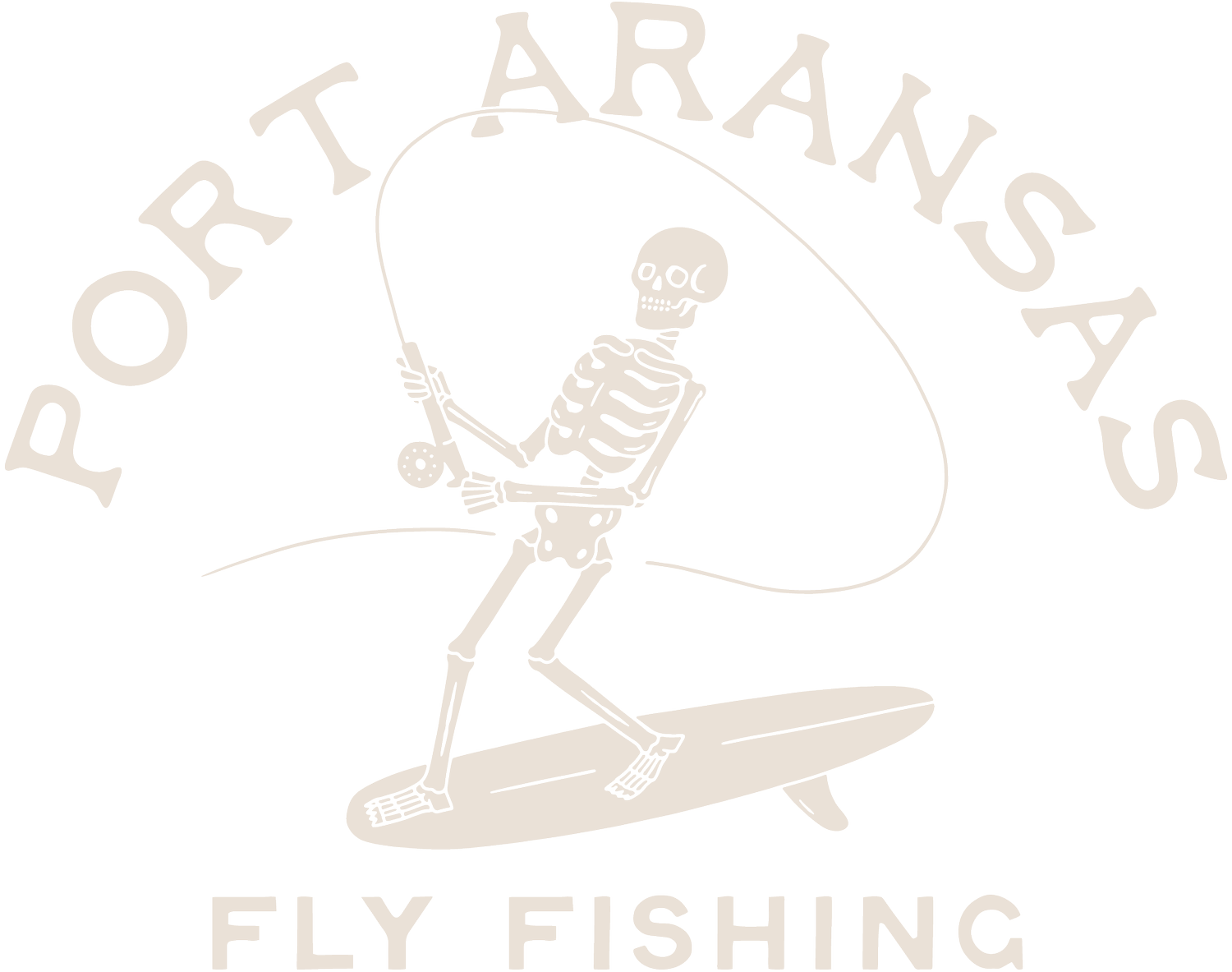
Sight-Fishing The Rockport & Port Aransas Flats
A Saltwater Fly Fisherman’s Dream
There are few things in fly fishing more exciting than watching a big redfish turn, flare, and inhale a well-presented fly in clear, shallow water. Except maybe what happens next. And there are few places better to experience it than the expansive grass flats, serpentine creeks, back lakes and oyster reefs and around Rockport and Port Aransas, in the Coastal Bend of Texas. From the bow of Capt. Tom Pennington’s Hell’s Bay poling skiff, you’ll explore this uniquely beautiful ecosystem while stalking wary redfish, black drum and other species with help from a skilled and patient coach.

What to Expect on Your Trip with Capt. Tom
Every day sight fishing the Port Aransas and Rockport flats is different, but here’s a general idea of what you can expect:
The day starts with a safety briefing at the dock, an orientation to the skiff and a discussion of our game plan for the day.
Our runs are short — usually 10 to 30 minutes before we start fishing. They are often across open bays and deepwater shipping channels, though; expect some spray on windy days.
Year-round, redfish are the primary target species. Most of the fish we catch are between 20” and 30”. We also sometimes target black drum. We occasionally come across speckled trout and flounder but don’t go looking for them specifically.
If at all possible, we sight fish. That doesn’t mean we never blind cast, but sight-fishing is the default. Water conditions vary from gin-clear to slightly stained.
Virtually all of our fishing is done in very shallow water. We most often cast to fish cruising or holding in 12” to 18” of water and grass, tailing in 8” to 12” or “belly-crawling” along shorelines with their backs exposed. Our fish consistently school up in spring, summer and fall. In winter, cruising singles are the norm.
We pole 90% of the time. Our skiff is rigged for a trolling motor, but we use it only rarely. When sight-fishing for redfish, we pole exclusively and leave the trolling motor home.
We fish one angler at a time, with rare exceptions. This is technical fishing that requires close coordination between guide and angler. On trips with two anglers, feel free to rotate however you wish.

A Unique Ecosystem
Rich in marine, terrestrial and bird life, the waters around Rockport and Port Aransas are a wonderful mix of winding, mangrove-lined tidal creeks, hidden back lakes, abundant oyster reefs, and vast seagrass flats dotted with pockets of sand. Bottom composition is mostly sand or deep mud, while shoreline vegetation is mainly mangroves and spartina grass. The climate is surprisingly mild with average daytime highs ranging from the mid-60s in January to the high-80s in summer. The moderating influence of the Gulf keeps average lows in the 50s even in winter, although several recent hard freezes have killed large areas of mangroves, whose skeletal remains make for an almost otherworldly setting.
Fishing with A Photographer
Capt. Tom isn’t just an accomplished angler and guide; he’s also a world-class sports photographer who has shot Super Bowls, World Series, NBA Championships, Olympics, NBA Finals, PGA Majors, F1 Racing, World Cup ski racing and, of course, fly fishing. Visit @penningtonphoto and @portaransasflyfishing on Instagram to see some of his work. Putting you on fish is always the top priority, but to the degree possible, we visually document every Port Aransas Fly Fishing trip, making images available to clients for their personal use.

Nearshore and Offshore Fly Fishing
In addition to inshore sight fishing, Port Aransas Fly Fishing offers nearshore and offshore trips targeting red snapper, cobia, jack crevalle, Spanish mackerel and kingfish when conditions allow. On these trips, we use a variety of refined techniques to attract our target species within range and then sight cast with fly rods.
It’s a specialized style of fishing that requires patience and persistence, but the first time you watch a 15 lb. snapper or giant cobia eat your fly next to the boat, you’ll understand why we do it.
Because these trips are so dependent on weather and ocean conditions, please understand that they are difficult to plan. If conditions aren’t right on the day of your trip, we can always fish the flats instead. Alternatively, if offshore conditions are right when you have an inshore trip scheduled, we’ll let you know that and decide how you want to fish.


